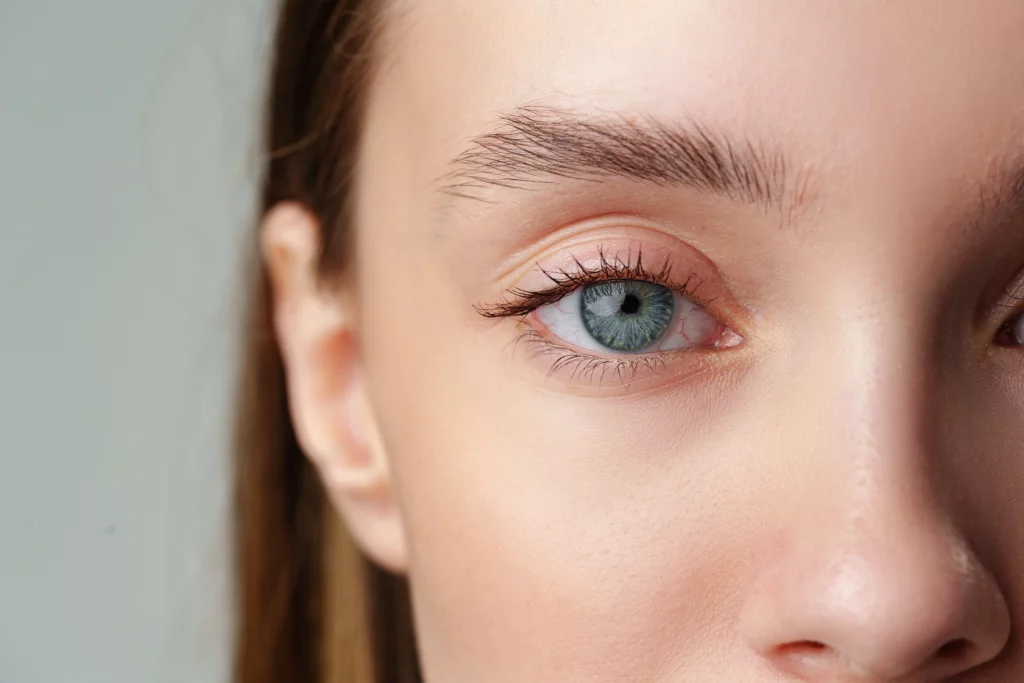What Is the Difference Between Blepharoplasty and Ptosis Repair?

Table of contents
1.
2.
Key Differences Between Blepharoplasty and Ptosis Surgery
Can Ptosis Repair and Blepharoplasty Be Combined?
5.
6.
7.
Experience Advanced Eyelid Surgery With Dr. Jayaram
8.
8.
If you’re considering eyelid surgery to improve your vision or achieve a more youthful appearance, you might wonder: What is the difference between blepharoplasty and ptosis repair? In short, blepharoplasty removes excess skin, muscle tissue, or fat from the eyelids, primarily for cosmetic reasons or to address functional problems. On the other hand, ptosis repair focuses on tightening the muscle responsible for lifting the eyelid. It corrects tissue weakness that can affect your vision. Although both surgeries address droopy eyelids, their goals and indications differ.
Dermatochalasis refers to the loosening and redundancy of eyelid skin, typically due to aging, genetics, or environmental factors. Over time, the skin loses elasticity, and fat can accumulate or herniate, resulting in hooded or baggy eyelids. This condition may be purely aesthetic or, in severe cases, impair peripheral vision.
Ptosis can be congenital (present at birth) or acquired later in life. Common causes include age-related changes, trauma, neurological conditions, or long-term contact lens wear. Unlike dermatochalasis, which is caused by drooping eyelid skin, ptosis is a problem with the lifting muscle itself.
Understanding the difference between blepharoplasty and ptosis repair starts with the intent of each procedure. Blepharoplasty is primarily performed for cosmetic improvement or to remove redundant skin that may block vision. The main goal of ptosis repair is functional—to restore the eyelid’s ability to open properly by fixing the muscle responsible for lifting it.
Blepharoplasty typically involves excising or repositioning excess skin and fat, while ptosis repair targets the eyelid’s lifting muscle through a small incision in the upper eyelid crease. Lower blepharoplasty may include internal permanent sutures, leaving no external signs of surgery. Both procedures can be performed simultaneously if a patient has excess skin and muscle weakness.
Dr. Ann Jayaram is one of the leading oculoplastic surgeons specializing in blepharoplasty and ptosis repair. Her unique technique ensures patients receive gentle treatment with minimal downtime and quicker recovery. Each individual undergoes a thorough evaluation, and a surgical plan is tailored to their unique anatomy and goals. Discover more about Dr. Jayaram’s credentials here, or explore eyelid treatment options on our blepharoplasty page.
Consider consulting with Dr. Ann Jayaram at ellevateMD for professional guidance and personalized care. You can receive lower and/or upper eyelid blepharoplasty, depending on your needs. Patients with neurological or muscular disorders usually undergo additional evaluation to ensure maximum safety and effectiveness. Whether you choose lower or upper blepharoplasty, Dr. Jayaram will reposition tissues and may correct eyelid muscles to provide excellent results.